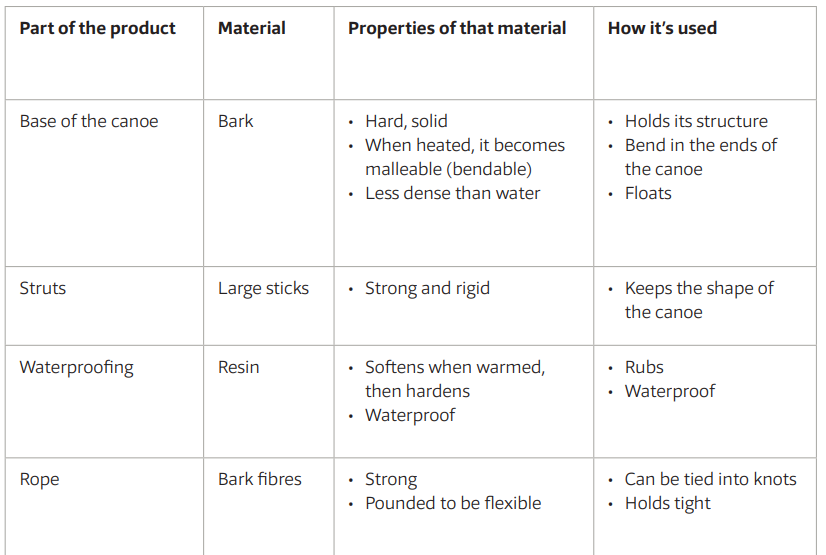

How do materials change when heated and cooled?
You can access the K-2 resource and 3-6 resource through:
If you do need the login details, they are:
Username – Hutchins
Password – read
Knowledge developed over thousands of years
First Nations people have developed a wide range of specialist skills around Australian environments, plants and animals. These specialist techniques and processes have developed through the understanding of scientific change and the effect of human actions.
The thermoplastic properties of resin and sap, and the techniques to use them have been understood by First Nations people for thousands of years. Binjareb man, Brett Nannup explains: “It is knowing that I am using the same techniques my ancestors have used for thousands of years that makes this so powerful” (Western Australian Museum 2020b).
Aboriginal Use of Resin and Sap
Resins are taken from porcupine grass (Triodia species) and grass trees (Xanthorrhea species). Triodia species are also commonly known as spinifex, which is a dominant species in arid and semi-arid regions of Australia (Johnson 2015). Aboriginal and Torres Strait Islander people have many uses for resin, such as an adhesive and a sealant when manufacturing, crafting and repairing canoes, tools and weaponry, body adornments and minimising water loss in water carriers (Pitman & Wallis 2012). It was a prized trade item and resource for First Nations people, like the people in the south-west of Western Australia, where it grows locally (Western Australian Museum 2020b).
Learn about making a kodj (axe): Watch this video of Noongar girl Lily Wilson talking about making a kodj (axe) with her grandmother, Noongar elder Laurel Nannup, and her father, Brett Nannup.
Making a traditional Aboriginal spear
“Indigenous Australians have collected spinifex for tens of thousands of years ... Spinifex grass is an ancient and sacred material to Indigenous people, but also a material we use all the time”, Mr Saltmere, a proud Indjalandji–Dhidhanu man says, “We’ve used it for building shelters, making beds, and as a glue in making instruments like spears and boomerangs. And we know that the oils and the waxes can be used to treat wounds and in other medicines” (UQ 2021).
The coolamon is an important tool for Indigenous communities across Australia that are used to carry food, water and even small babies. There are many types, including bark coolamons, which are made from soft bark and held in shape by string and resin (MAAS 2003). Wallaby-skin watercarriers in arid and semi-arid areas of Australia are tanned with resin to improve their water-holding ability (Australian Museum 2019). In the Torres Strait Islands, the sewn-together sheets of shell in masks, used for rituals and ceremonies, are often sealed with resin (Australian Museum 2018).
There’s a lengthy process to collecting the resin from spinifex that involves threshing the leaves to collect a dust-like resin, then heating it until it comes together, before it cools into a hardened solid state. These hardened solids are then pounded to a fine powder and heated several times to become the sticky substance needed to produce a glue (Pitman & Wallis 2012). Brett Nannup explains that in his Country, balga resin; charcoal and organic materials like grass and/or kangaroo poo; are combined to achieve the best resin mix (Western Australian Museum 2020b).
Similarly, beeswax’s ability to change state, from solid to liquid, makes it a very useful material to seal and protect wooden items like bark buckets (Western Australia Museum 2020a). It‘s been used as an adhesive when making spinning tops and also for attaching feathers and seeds to regalia and other items for decoration (Australian Museum 2018; Museum Victoria 2013; UQ Anthropology Museum 2011). When heated, the softness of beeswax can be moulded and has been used in rock art in Arnhem Land (Tacon et al. 2010). It’s also used in the Torres Strait to tune a warup; an hourglass-shaped drum covered in snake or goanna skin (Bangarra Dance Theatre Australia n.d.).
Sharing scientific knowledge and learning for the future
Scientific knowledge has developed throughout history in all cultures around the world. Current research into science and technology is recognising the value of Indigenous knowledge by combining Western scientific knowledge and history, with Indigenous scientific knowledge and histories to discover and solve future challenges. This is demonstrated in the research into the spinifex resin industry (ABC Education 2010).
Joe Sambono, a Jingili man and zoologist, explains: This is not an issue of Western science vs Indigenous science. It is simply a matter of understanding that all groups of humans around the world and throughout history have hypothesised, experimented, made empirical observations, gathered evidence, recognised patterns, verified through repetition, made inferences and predictions, and developed branches of knowledge that helped them to make sense of the world around them and their place within it. (Sambono 2018)

Explore the Australian Museum collection of items: Explore Cultural Objects, Art and Technology.

